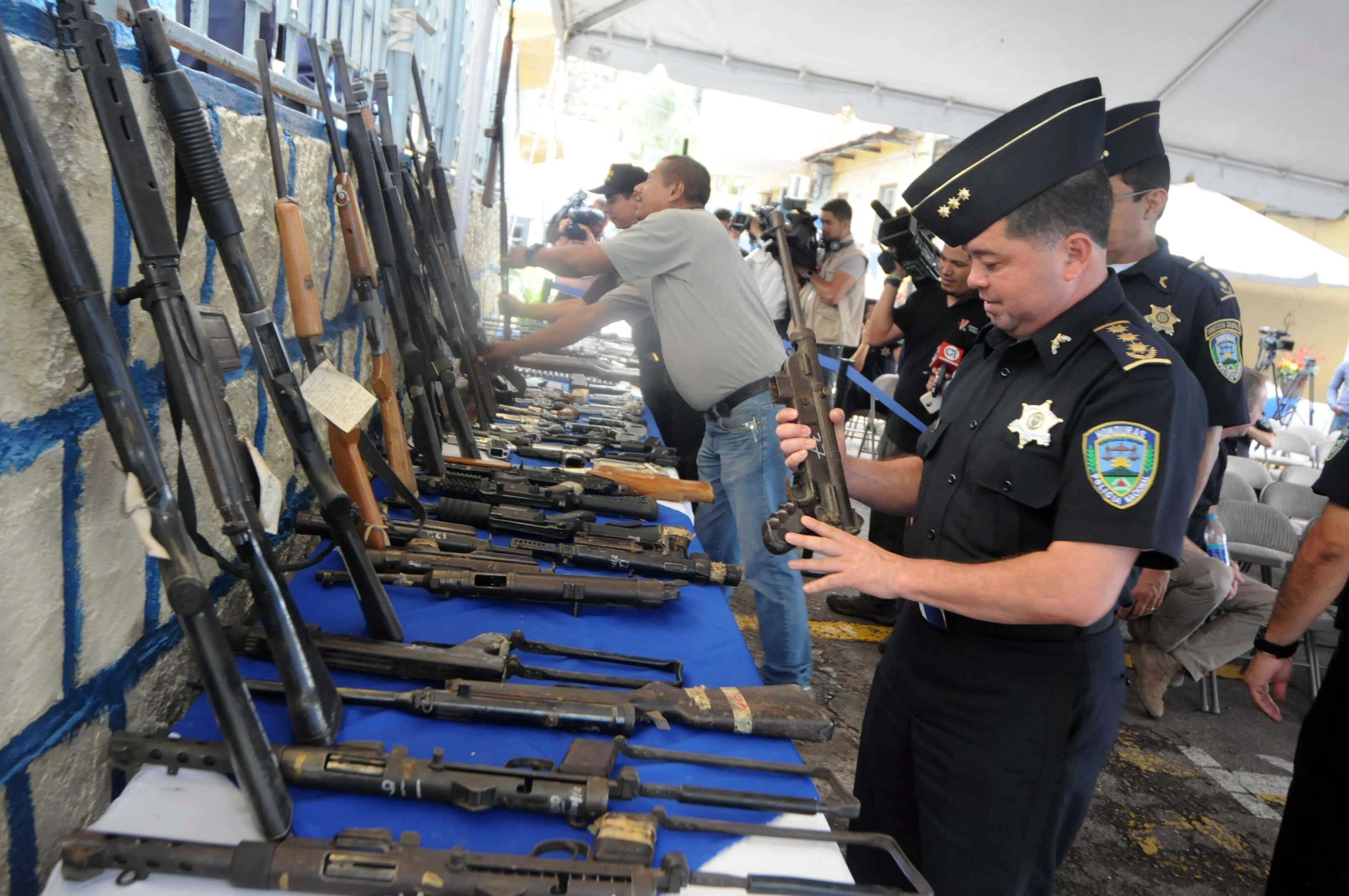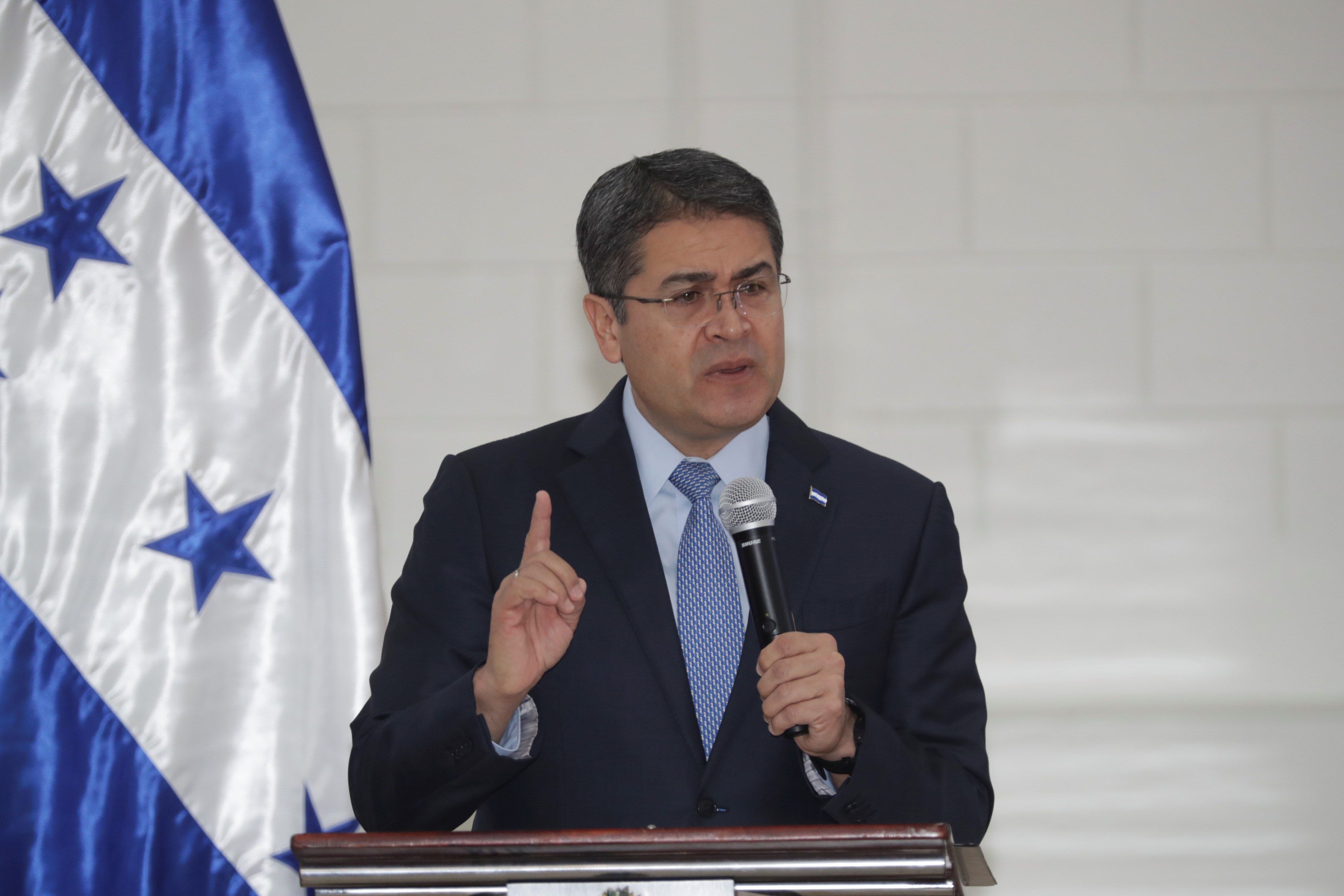
The Spirit, Copán. There is something idyllic about this small Honduran village, which is nothing more than a central street surrounded by concrete houses and crowned by a Catholic temple of Spanish colonial architecture. This is reached by narrow paths that wind up the mountain in search of paths that cross pine forests. It's calm now. But this place keeps secrets. Terrible.
One of the stories still heard in this town and its surroundings is that of the days when Joaquín Archibaldo Guzmán Loera, the fearsome Chapo, formerly leader of the Sinaloa Cartel and a regular visitor to the Copán mountains, was camping here. It is a story that is still told quietly in the mountains and rivers that border neighboring Guatemala and on the roads that reach La Entrada, the commercial city 40 kilometers south from which these western Honduran territories open to the rest of the country.
What this story tells is that, at the dawn of the 21st century, El Chapo personally consolidated Sinaloa's business in Honduras, where by then the most relevant portion of the Central American cocaine route ran. There, in Copán, Badiraguato found its best partners in the brothers Luis and Miguel Arnulfo Valle, leaders of the Los Valle clan, and in Alexander Ardón, an influential local mayor who served as a nexus to drug trafficking in the corridors of Honduran politics.
Since 2019, Infobae has spoken to a dozen people in Honduras who knew firsthand about Chapo's travels and stays in Honduras, including two senior police officers who did intelligence work at the beginning of the last decade, a bishop and priest who served in the diocese of Copán, and a former worker who personally knew Los Valle and former mayor Ardón.
All these sources agree that Chapo Guzmán found in western Honduras, in addition to being a good place to do business, a comfortable rear-guard refuge to escape the Mexican and American police officers who had been following him for two decades at the beginning of the century.
After surrendering to U.S. authorities in March 2019 in Guatemala City, former Mayor Ardon, a partner of Los Valle and El Chapo, explained in detail to federal agents and prosecutors of the Department of Justice the relationship between the Mexican and Honduran drug traffickers. One of the most important details Ardón brought to the police officers was the confirmation that Juan Antonio “Tony” Hernández was, in 2013 and 2014, the link between his brother, the newly promoted president Juan Orlando Hernández, and the drug underworld in Honduras, including the partnership with Sinaloa.
Later, when Tony Hernandez was tried in the United States in October 2019, Ardon explained that he had been to a meeting in 2013 where El Chapo gave Tony a million dollars to fund Juan Orlando's campaign. It was an investment in the future of the Mexican to put records in another clan, that of the Hernandez, which was about to become the rector of organized crime in Honduras, as confirmed years later dozens of judicial and journalistic investigations and, ultimately, the capture, last February, of the former president, who is waiting in a cell in Tegucigalpa to be extradited to answer drug trafficking charges in a New York court.
It seems, however, that this is only the tip of a huge iceberg that will come to light during an eventual trial of former President Hernandez in the United States. This was recently warned by General Ramón Sabillón, the minister of security in the newly promoted government of President Xiomara Castro.
Sabillón revealed this Sunday, March 20, in an interview with a Honduran television station, that it was El Chapo who, using the influence he already had with the government of Hernandez, forced the president to remove him.

In 2014, Sabillón, who was then chief of police, had developed, with the support of the US Drug Control Agency (DEA) investigations into Los Valle, Ardon and Los Cachiros and led the operation that ended with the capture of the former. Already suspicious of the possible relations between the underworld and the nascent political power of his country, Sabillón did not report the capture of Los Valle to his boss, President Juan Orlando Hernández, until it had occurred. Then came the dismissal.
During the interview the previous Sunday, Sabillón said that the capture was the reason that the then minister of security, Arturo Corrales, discharged him. “There were substantive issues such as the capture of extraditable lords... I think that was the cause, since public institutions began to be permeated by organized crime and drug trafficking,” the general said.
The minister did not hesitate to point out the man who pulled the strings so that Juan Orlando Hernández's men would remove him. “It was a situation that came from Guzmán Loera, alias el Chapo, because it was affecting them and they decided to remove me from office.”
Sabillón knows what he's talking about. When he captured the Valle brothers in 2014, he took them to the cells of the special unit of the National Police known as Los Cobra, where he questioned the capos and learned, firsthand, that Tony Hernández and his brother Juan Orlando had consolidated themselves at the top of the drug trafficking pyramid that moved, above all, Sinaloa drugs.
What El Chapo helped form at the turn of the century was a network of drug traffickers and politicians that ran smoothly for a decade in Honduras
The testimony of former mayor Ardón, an ally of Guzmán Loera, los Valle and los Hernández and other accounts contained in court files, conclude that Chapo's money was used in part to oil a machine capable of receiving tons of cocaine in northeastern Honduras, controlled by the Los Cachiros clan, who, protected by police and military convoys moved drugs by road to San Pedro Sula and Puerto Cortes or even to La Entrada, in Copán, where they delivered it to Los Valle for this clan to take the drugs out to Guatemala.
In another judicial file, the one opened to Fabio Lobo, son of former Honduran President Porfirio “Pepe” Lobo (2010-2014), there is evidence of how the Sinaloa Cartel, led by Chapo Guzmán, managed to articulate the proper functioning of the two major drug clans in Honduras and the political authority and the public forces to ensure that the Honduran route will work without obstacles.
It was Devis Leonel Rivera Maradiaga, leader of the Los Cachiros clan who also surrendered to the United States, who narrated how the network worked.
El Cachiro said, for example, that he met with Fabio Lobo one day in November 2012, near an airstrip in Tocoa, in the northern department of Colón. They were there to take over a shipment of a ton of cocaine that came by plane from Apure, in Venezuela, and was due to arrive in Mexico. The drug was from the Sinaloa Cartel.
At the request of Rivera Maradiaga, Lobo Jr. had arrived in Tocoa, one of the operations centers of Los Cachiros, to escort the convoy that would carry the cargo to La Entrada, in the department of Copán, on the border with Guatemala. Somewhere between Tocoa and San Pedro Sula, a military checkpoint stopped the convoy. Fabio Lobo spoke to the officer in charge and the drug continued on its way.

A few hours later, the caravan arrived at La Entrada. There, Rivera Maradiaga asked Fabio to wait for him in the car while he delivered the drugs to his partners. The cocaine was left in the hands of Digna Valle, the financial brain of the Valle family.
For that operation, Fabio Lobo received $50,000 from Rivera Maradiaga. When Lobo was arrested in May 2015, the Hernandez were already making efforts to seize the western roads.
By the end of the first decade of 2000, El Chapo used to spend important seasons in El Espíritu, in Copán, when things in Mexico got too complicated.
A senior police chief who followed in the footsteps of the Valle and his partners in Honduras confirmed that Guzman was “moving around Copán” in the days leading up to February 22, 2014, the second time Mexican authorities captured them in Mazatlan, Sinaloa.
In Santa Rosa de Copán, the charming colonial city that is the capital of the province, a priest who knew Los Valle and Ardon and even had interactions with them “for church reasons”, says quietly that at the beginning of last decade, back in 2012, Luis Valle used to order the closure of the city's streets on nights when the clan celebrated Chapo's presence in Copán.

“They were making a mess on the street. They (Los Valle) were discreet and El Chapo would not be seen, but the bodyguards relaxed...”, told Infobae a priest who knew Ardon and the Valles and who spoke in 2021 on condition of anonymity for safety. The religious claims that he received reports that, at the climax of those holidays, bodyguards of the drug traffickers had even raped young copanecas.
This priest confirmed something that a senior police chief, responsible for intelligence in the years that Los Valle were captured, had already said to Infobae: El Chapo used to spend long periods in El Espíritu, from where he moved to neighboring Guatemala on horseback when necessary.
The town of Los Valle was a kind of center of operations for the Mexican during his visits to Honduras; these sources say that, from the Copanecas mountains, El Chapo would also travel to San Pedro Sula, about 4 hours away by car, to secure his business in the Honduran corridor.
It was at a cattle farm owned by Miguel Arnulfo Valle, outside El Espíritu, that Chapo Guzmán met with Tony Hernandez in 2013 to give him the million dollars that, according to testimonies collected by US agents, were used for Juan Orlando Hernandez's presidential campaign.
Chapo Guzmán stopped going to Honduras in 2013, as confirmed by General Sabillón. In February 2014, the Mexican navy recaptured the head of Sinaloa in Mexico. Months later, in November, Sabillón and his family stopped the Valleys on the roads that link El Espíritu with the Guatemalan border. It was the end of an era.
From the visits to El Chapo, testimonies remained, some of them turned into legends, which are still circulating in Copán. And there were the testimonies that ultimately led Tony Hernández to a jail in the United States and have his brother Juan Orlando one step away from extradition.
KEEP READING:
Últimas Noticias
Debanhi Escobar: they secured the motel where she was found lifeless in a cistern
Members of the Specialized Prosecutor's Office in Nuevo León secured the Nueva Castilla Motel as part of the investigations into the case

The oldest person in the world died at the age of 119
Kane Tanaka lived in Japan. She was born six months earlier than George Orwell, the same year that the Wright brothers first flew, and Marie Curie became the first woman to win a Nobel Prize

Macabre find in CDMX: they left a body bagged and tied in a taxi
The body was left in the back seats of the car. It was covered with black bags and tied with industrial tape
The eagles of America will face Manchester City in a duel of legends. Here are the details
The top Mexican football champion will play a match with Pep Guardiola's squad in the Lone Star Cup

Why is it good to bring dogs out to know the world when they are puppies
A so-called protection against the spread of diseases threatens the integral development of dogs



